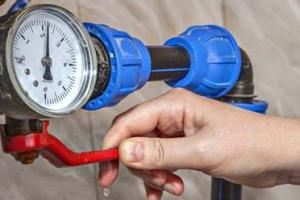Quick and Easy Guide to Turn Off Your Water Supply

-
Quick Links:
- Introduction
- Why You Might Need to Turn Off Your Water Supply
- Types of Water Shut-Off Valves
- How to Locate Your Water Shut-Off Valve
- Step-by-Step Guide to Turning Off Your Water Supply
- Common Issues When Shutting Off Water
- Case Study: Emergency Water Shut Off
- Expert Insights and Tips
- Preventive Measures for Future Issues
- FAQs
Introduction
Understanding how to turn off your water supply is a crucial skill every homeowner should possess. Whether you're facing a plumbing emergency, performing routine maintenance, or preparing for a home renovation, knowing how to quickly shut off your water can save you from significant damage and costly repairs.
Why You Might Need to Turn Off Your Water Supply
There are several situations where turning off your water supply is necessary:
- Plumbing Emergencies: Leaks, burst pipes, or overflowing toilets.
- Routine Maintenance: Repairs or installations that require water to be shut off.
- Winter Preparations: Preventing pipe bursts during freezing temperatures.
Types of Water Shut-Off Valves
Understanding the different types of shut-off valves will help you locate and operate them effectively:
- Main Shut-Off Valve: Controls the entire water supply to your home.
- Individual Fixture Shut-Off Valves: Control water supply to specific fixtures (sinks, toilets, etc.).
- Gate Valves: Designed for full flow and are usually located underground.
- Ball Valves: More reliable and allow for quick shut-off.
How to Locate Your Water Shut-Off Valve
Finding your shut-off valves is easy if you know where to look:
- Inside the Home: Look in basements, crawlspaces, or near water heaters.
- Outside the Home: Typically found near the foundation or in gardens.
- By the Street: A curb stop valve is located near the street and may require a special tool to operate.
Step-by-Step Guide to Turning Off Your Water Supply
Follow these steps to quickly turn off your water supply:
Step 1: Identify the Valve Type
Determine whether you are dealing with a main shut-off valve or an individual fixture valve.
Step 2: Locate the Valve
Use the information provided earlier to find the valve.
Step 3: Turn the Valve Off
For a gate valve, turn it clockwise until it stops. For a ball valve, rotate it 90 degrees until the lever is perpendicular to the pipe.
Step 4: Check for Water Flow
Open a faucet to check if water is still flowing. If not, you've successfully turned off the water supply.
Common Issues When Shutting Off Water
Here are some common issues you may encounter:
- Stuck Valves: Rust or mineral buildup can cause valves to stick.
- Leaking Valves: Old or worn-out valves may leak even when turned off.
- Difficulty Locating Valves: Some homes may have hidden or hard-to-reach valves.
Case Study: Emergency Water Shut Off
Consider a scenario where a homeowner discovers a pipe leak in the middle of the night. By knowing the location of the main shut-off valve and understanding how to operate it, they can prevent extensive water damage and costly repairs.
Expert Insights and Tips
We consulted with plumbing experts to provide you with the following insights:
- Regularly check and maintain your shut-off valves to ensure they function correctly.
- Consider installing a smart shut-off valve that can be controlled remotely.
- Keep a plumbing toolkit handy for emergencies.
Preventive Measures for Future Issues
To prevent future issues, consider the following:
- Insulate pipes during winter to prevent freezing.
- Schedule annual plumbing inspections.
- Educate family members about shut-off valve locations.
FAQs
1. How often should I check my water shut-off valves?
It's recommended to check them at least once a year.
2. What should I do if the valve is stuck?
Try using penetrating oil or call a plumber if it doesn't budge.
3. Can I turn off individual fixture valves instead of the main valve?
Yes, if the issue is localized to one fixture, you can turn off its individual valve.
4. Is turning off the water supply safe for my plumbing system?
Yes, it is safe and often necessary for repairs and maintenance.
5. How do I know if my shut-off valve is working?
Test it by turning it off and checking for water flow at your fixtures.
6. What materials are shut-off valves made of?
Most are made of brass, PVC, or stainless steel.
7. What if I can't find my water shut-off valve?
Consult your home’s plumbing diagram or contact a local plumber for assistance.
8. Can I install a new shut-off valve myself?
Yes, if you're comfortable with DIY projects, but ensure you follow local codes.
9. What’s the difference between a gate valve and a ball valve?
Gate valves are better for full flow, while ball valves provide quicker shut-off.
10. How do I prevent future leaks?
Regular maintenance and replacing worn-out pipes can help prevent leaks.